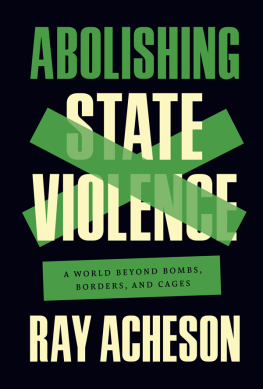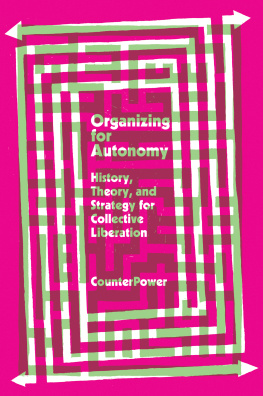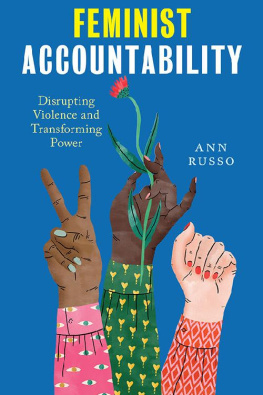Summary
Landmarks
Abolishing State Violence
Abolishing State Violence
A World Beyond Bombs, Borders, and Cages
Ray Acheson

2022 Ray Acheson
Published in 2022 by
Haymarket Books
P.O. Box 180165
Chicago, IL 60618
773-583-7884
www.haymarketbooks.org
ISBN: 978-1-64259-720-2
Distributed to the trade in the US through Consortium Book Sales and Distribution (www.cbsd.com) and internationally through Ingram Publisher Services International (www.ingramcontent.com).
This book was published with the generous support of Lannan Foundation and Wallace Action Fund.
Special discounts are available for bulk purchases by organizations and institutions. Please email for more information.
Cover design by David Gee.
Library of Congress Cataloging-in-Publication data is available.

for all the abolitionists,
past, present, and future
and for tim and nela,
for solidarity and laughter
Introduction
In the sizzling northern hemisphere summer of 2020, demands for police abolition burst into mainstream public consciousness. As people around the world took to the streets in revolt against police brutality in the wake of George Floyds murder in Minneapolis, among the principal rallying cries were Defund the Police and Abolish the Police. These demands took many people by surprise, yet were a clarion call built from decades, even centuries, of abolitionist organizing. Just as Floyds murder was the latest in a long bloodied and bruised history of police brutality against Black lives and the lives of other people of color, LGBTQ+ people, and other marginalized and criminalized people, the call for abolition also has a long and storied past.
Throughout history, people have demanded the abolition of structures and systems that cause harm. Activists, organizers, and inspired people around the world have demanded the abolition of slavery and segregation; of restrictions and discrimination based on sex, gender, sexual orientation, race, or religion; of weapons and of war; of the death penalty and unlawful detention; of economic inequalities and the capitalist system; and of so much more. Each of these demands were, or continue to be, met with derision. Structures or systems that have now been abolished were once considered instrumental to economics or politics, the calls to dismantle them treated as nave, irrational, or irresponsible. For the struggles still underway, the obstacles are similarridicule and deliberate spread of misinformation; massive investments in reforms instead of real change; and, fundamentally, failure of imagination that keeps peoples minds locked into believing that systems of oppression are the best chance we have for survival, even as the evidence mounts that these same systems are responsible for our painand now, increasingly, for our extinction.
Nevertheless, abolitionist organizers persist. People agitating for change have worked for generations to open the minds of naysayers to the possibilities of alternative ways of living and organizing our societies. They have sought to change the economic, political, and social costs and benefits of these structures. They have altered, disrupted, and undone the pursuits of power and profit that have been forged by the few at the expense of the very, very many. Strikes, walkouts, sit-ins, boycotts, marches, rallies, petitions, letter writing, phone calls, direct action, street theater, public debates, media engagement, and so much morethese are but some of the tools devised and employed by those working for change.
Much of this work has taken place within the framework of abolitionism. Evoking a historical continuity, the language and practice of abolition provides context and clarity to our efforts for social transformation. Many abolitionists root this work in W.E.B. Du Bois classic analysis of abolition democracy, note scholars Dan Berger and David Stein. This includes the political struggle led by formerly enslaved people in the wake of the Civil War to construct new institutions while also eradicating violent ones.
That this process never occurred is why the United States continues to face issues of systemic and structural racism in 2020 that should have But since the abolition of slavery, the framework of abolitionism has been instrumental in guiding work against other structures of state violence, from the capitalist system to nuclear bombs. Multitudes of people across a myriad of identities, experiences, and geographies have been part of abolitionist projects. Black organizers, Chicanx and Latinx activists, Muslim groups, Indigenous nations, Quakers, pacifists, disarmament and anti-war activists, veterans, feminists, LGBTQ+ communities, communists, socialists and others on the radical Left, workers, people on the move, faith and interfaith groups, disability rights groups, and many, many others have agitated and organized for social transformation through abolition of weapons, wars, borders, police, prisons, capitalism, and many other structures that serve oppression and inequality.
The frame of abolition speaks directly to the need not only to put an end to a particular source of harm but to fundamentally transform the political, economic, and social relations that allowed that source of harm to grow and persist. Its about looking at the root causes of harm and violence and working to build alternatives that prevent this harm, rather than relying on existing structures that only create more harm. Abolition seeks not the destruction, but the transformation of our current world order, including through the disarming, demilitarizing, defunding, and disbanding of entities of coercive state power that work against peace and freedom. Abolition is not just about tearing down the system, but also about building anew, based on cooperation, equity, and justice for all. Abolition is a political project of promiscuous careof living in a more expansive way than our current capitalist, racist, patriarchal society tells us we can.
Systems abolition
Abolition is about more than one aspect of injustice or harm. The forces and philosophies that stand against justice, peace, equality, and care are pervasive, enmeshed within and throughout multiple structures of
Patriarchy shapes and entrenches gender as a cultural construction. It insists upon norms, roles, and conditions of being a man and a woman. It thus oppresses not just women but anyone who does not conform to norms of their prescribed gender or to the gender binary. This includes men who do not abide by the cultural expectations of masculinity, as well as gender nonconforming, nonbinary, intersex, and trans people. It is important to note that such norms are constructedthey are neither inherent nor universal. Gender norms are produced in various sites, including through the policies of states, security discourses, education, media debates, popular culture, and family relations.
Patriarchy is also about more than gender or sex. It is a philosophy of domination not just of men and masculinity but also of whiteness and wealth, of able-bodiedness and heteronormativity. It derives from the capitalist prioritization of profit over people, and helps sustain the militarism that accumulates wealth through war. Together with racism, colonialism, and imperialism, patriarchy permeates the systems that oppress us and must be confronted within each, abolished as part of the abolition of the systems it sustains, informs, feeds. Decolonization, gender and racial justice, ecological well-being, and global equality are thus imperative for the abolition of each of the structures of violence we confront in these pages.











